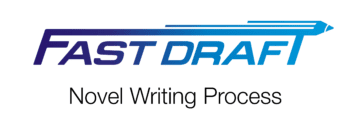
Module 6: Scene Blueprint
Lesson 3 (of 7) – Pulse

Download the Scene Pulse Summary (if desired for future reference)
Worksheet Action Step(s):
Action Step #1 – Your scene pulse:
Analyze the Scene Pulse by looking at your favorite stories inside your genre (novel or movie)
Now that you have witnessed the Cause and Effect pattern living inside scene structure, it’s time for you to observe, study, and identify the two scene types living inside one of your favorite stories.
Note: Moving forward, you should pay attention to the beginning, middle, and end of all scenes that you absorb in novels or films. Basically, you should look for the Scene Pulse in all fiction and movies from here out to continue to solidify your grasp of scene structure.
#1 Read or watch the first 4 scenes of a story inside your genre, and identify each scene’s type (Mission or Response).
#2 List your findings below to reinforce the Cause and Effect pattern you witnessed inside these scenes.
#3 Next, choose another 4 scenes inside the same story, but make sure these scenes are wrapped around one of the 7 major plot milestones, and identify each scene’s type (Mission or Response).
#4 Once again list your findings to reinforce the Cause and Effect pattern you witnessed inside these scenes.
Action Step #2 – Your scene pulse:
Create your own Cause and Effect pattern using the Scene Pulse
Now that you have witnessed the Cause and Effect pattern living inside scene structure, it’s time for you to observe, study, and identify the two scene types living inside one of your favorite stories. Write, summarize or outline 4 scenes using the Scene Pulse from scene structure.
#1 Write, summarize or outline 4 scenes for your story using the Scene Pulse from scene structure. (Due to the likely larger word counts of your 4 scenes, please write them in a word processor or separate document.)
These scenes can be for your current story or you can simply write them for an entirely different story that you make up on the spot. These scenes do not need to be a specific length. They can be short or long. They do not have to be any good!
The simple goal is for you to deliberately practice the Scene Pulse by creating with its Cause and Effect pattern. That means you can free write the scenes without outlining them. Just create using the Scene Pulse. 🙂
Has the Fast Draft Process helped you create your story in a new way?
If so, would you be open to sharing this course with a fellow storyteller?
Maybe you’ll be helping someone create the story they’ve always wanted to write?
